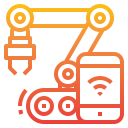Energy‑Smart Convenience
Learning thermostats can observe schedules, detect occupancy, and adjust temperatures without daily fiddling. Many studies report meaningful reductions in heating and cooling usage when settings align with real behavior. Add weather awareness and window‑open detection for extra wins. Want a template schedule to copy? Say “schedule,” and we’ll send a cozy‑but‑efficient baseline.
Energy‑Smart Convenience
Occupancy sensors ensure empty rooms stay dark, while sunrise and sunset cues keep brightness natural. Scene buttons make the efficient choice the easiest one to tap. Pair warm evening tones with lower brightness and you’ll appreciate the calm—and the bill. Which rooms waste the most light at your place? Tell us, and we’ll share scene ideas.
Energy‑Smart Convenience
Smart plugs and energy monitors reveal surprise power hogs—chargers, entertainment gear, or heaters idling away. Automations can power‑cycle nonessential devices nightly, then verify the change actually saved energy. Seen a shocking graph? Post it and we’ll brainstorm practical automations that trim the peaks without cramping your style.
Energy‑Smart Convenience
Lorem ipsum dolor sit amet, consectetur adipiscing elit. Ut elit tellus, luctus nec ullamcorper mattis, pulvinar dapibus leo.





